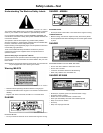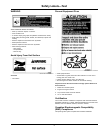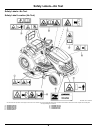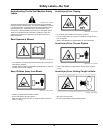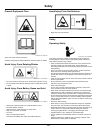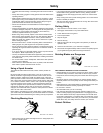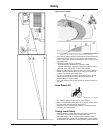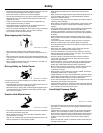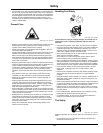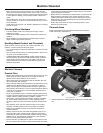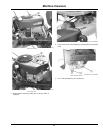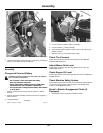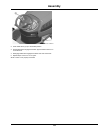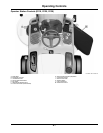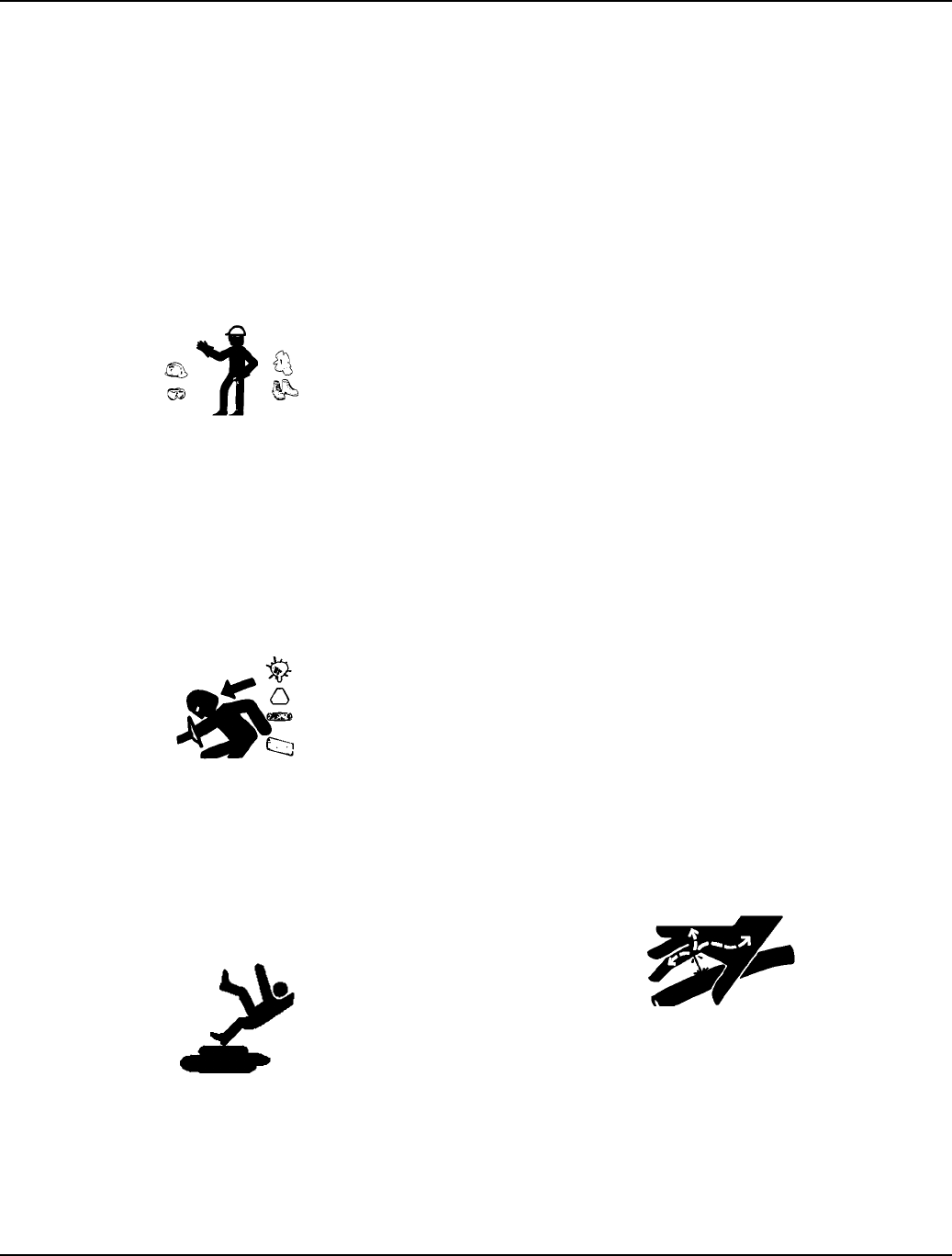
• Excessive towed load can cause loss of traction and loss of control on
slopes. Reduce towed weight when operating on slopes.
• Never allow children or others in or on towed equipment.
• Use only approved hitches. Tow only with a machine that has a hitch
designed for towing. Do not attach towed equipment except at the
approved hitch point.
• Follow the manufacturer’s recommendations for weight limits for
towed equipment and towing on slopes.
• Towed attachments will increase the risk of rollover. Refer to the
“Operating on Slopes” section for more information.
• Do not turn sharply. Use additional caution when turning or operating
under adverse surface conditions. Use care when reversing.
• Do not shift to neutral and coast downhill.
Wear Appropriate Clothing
MXAL41935—UN—18FEB13
• Always wear eye protection when operating the machine.
• Wear close tting clothing and safety equipment appropriate for the
job.
• While operating this machine, always wear substantial footwear and
long trousers. Do not operate the equipment when barefoot or wearing
open sandals.
• Wear a suitable protective device such as earplugs. Loud noise can
cause impairment or loss of hearing.
Driving Safely on Public Roads
MXAL42880—UN—26MAR13
Avoid personal injury or death resulting from a collision with another
vehicle on public roads:
• Use safety lights and devices. Slow moving machines when driven on
public roads are hard to see, especially at night.
• Whenever driving on public roads, use ashing warning lights and turn
signals according to local regulations. Extra ashing warning lights
may need to be installed.
Practice Safe Maintenance
MXAL41933—UN—18FEB13
• Only qualied, trained adults should service this machine. Understand
service procedure before doing work.
• Never operate machine in a closed area where dangerous carbon
monoxide fumes can collect.
• Keep all nuts and bolts tight, especially blade attachment bolts, to be
sure the equipment is in safe working condition.
• Never tamper with safety devices. Check their proper operation
regularly.
• Keep machine free of grass, leaves or other debris build-up. Clean up
oil or fuel spillage and remove any fuel-soaked debris. Allow the
machine to cool before storing.
• If you strike a foreign object, stop and inspect the machine. Repair, if
necessary, before restarting.
• Never make any adjustments or repairs with the engine running. Wait
for all movement to stop on machine before adjusting, cleaning or
repairing.
• Check grasscatcher components and the discharge guard frequently
and replace with manufacturer’s recommended parts, when
necessary. Grasscatcher components are subject to wear, damage,
and deterioration which could expose moving parts or allow objects to
be thrown.
• Mower blades are sharp. Wrap the blade or wear gloves, and use
extra care when servicing them. Only replace blades. Never straighten
or weld them.
• Check brake operation frequently. Adjust and service as required.
• Maintain or replace safety and instruction labels, as necessary.
• On multi-bladed machines, take care as rotating one blade can cause
other blades to rotate.
• Keep hands, feet, clothing, jewelry, and long hair away from any
moving parts, to prevent them from getting caught.
• Lower any attachments to the ground before cleaning or servicing
machine. Disengage all power and stop the engine. Lock park brake
and remove the key. Let machine cool.
• Securely support any machine elements that must be raised for
service work. Use jack stands or lock service latches to support
components when needed.
• Disconnect battery or remove spark plug wire (for gasoline engines)
before making any repairs. Disconnect negative terminal rst and
positive last. Install positive terminal rst and negative last.
• Before servicing machine or attachment, carefully release pressure
from any components with stored energy, such as hydraulic
components or springs.
• Keep all parts in good condition and properly installed. Fix damage
immediately. Replace worn or broken parts.
• Charge batteries in an open, well-ventilated area, away from sparks.
Unplug battery charger before connecting or disconnecting from the
battery. Wear protective clothing and use insulated tools.
• Do not strike the ywheel with a hammer or hard object because the
ywheel may later shatter during operation.
• If equipped with hydraulic lift - release hydraulic pressure by lowering
attachment or cutting units to the ground or to a mechanical stop and
move hydraulic control levers back and forth.
Avoid High Pressure Fluids
MXAL41927—UN—18FEB13
• Hydraulic hoses and lines can fail due to physical damage, kinks, age,
and exposure. Check hoses and lines regularly. Replace damaged
hoses and lines.
• Hydraulic uid connections can loosen due to physical damage and
vibration. Check connections regularly. Tighten loose connections.
• Escaping uid under pressure can penetrate the skin causing serious
injury. Avoid the hazard by relieving pressure before disconnecting
hydraulic or other lines. Tighten all connections before applying
pressure.
• Search for leaks with a piece of cardboard. Protect hands and body
from high pressure uids.
Safety
14



